You’ll save money, reduce energy waste, and improve your home’s comfort with the Great British Insulation Scheme. If you’re considering this government-backed initiative, you’ll want to understand the specific requirements and steps before starting your application. While the process might seem complex at first, breaking it down into manageable steps will help you navigate the system efficiently. Let’s explore how you can access this valuable home improvement opportunity.
Key Takeaways
- Check property eligibility by verifying your EPC rating (D-G) and Council Tax band (A-D England, A-E Scotland/Wales) through GOV.UK.
- Gather required documents including EPC certificate, council tax proof, and benefit statements if applying under low-income status.
- Use the GOV.UK Eligibility Checker to confirm qualification and receive referral to an energy supplier.
- Schedule a free home assessment with a TrustMark-accredited installer through your assigned energy supplier.
- Review installation costs, with low-income households potentially receiving full coverage while others contribute 10-30% of costs.
Understanding GBIS Requirements and Benefits
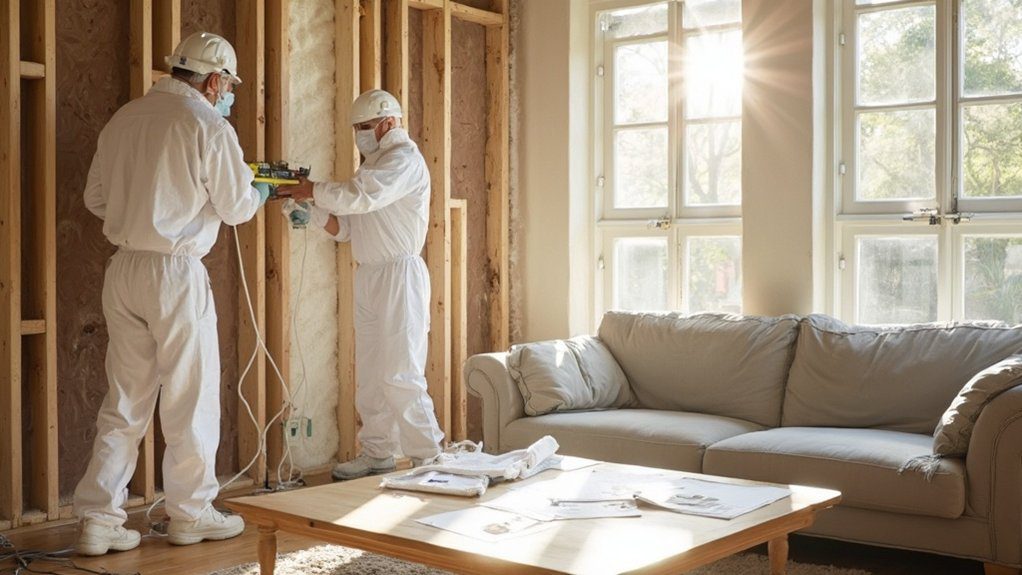
Before applying for the Great British Insulation Scheme, you’ll need to meet specific eligibility criteria while understanding the substantial benefits it offers.
Your home must have an EPC rating between D and G, and fall within Council Tax bands A-D in England or A-E in Scotland and Wales. You’ll qualify through either the low-income group if you receive benefits, or the general group if you meet the property criteria.
The scheme’s benefits make it worth pursuing. You can save £300-£400 annually on energy bills through various insulation materials like loft, cavity wall, or solid wall installations.
Beyond immediate savings, you’ll boost your home’s energy efficiency, increase its value, and help meet 2025 Building Regulations. Plus, you’re joining a community of homeowners actively reducing their carbon footprint.
Checking Your Property’s Eligibility
To start your GBIS application, you’ll need to verify your property’s eligibility through a few straightforward checks.
First, confirm your home’s EPC rating falls between D and G using the official GOV.UK EPC register. Properties with better ratings (A-C) won’t qualify for the scheme.
Next, check your council tax band. If you’re in England, your property must be in bands A-D, while Scottish and Welsh properties qualify if they’re in bands A-E.
You can easily verify this information through the GOV.UK Council Tax checker.
Required Documentation for Application
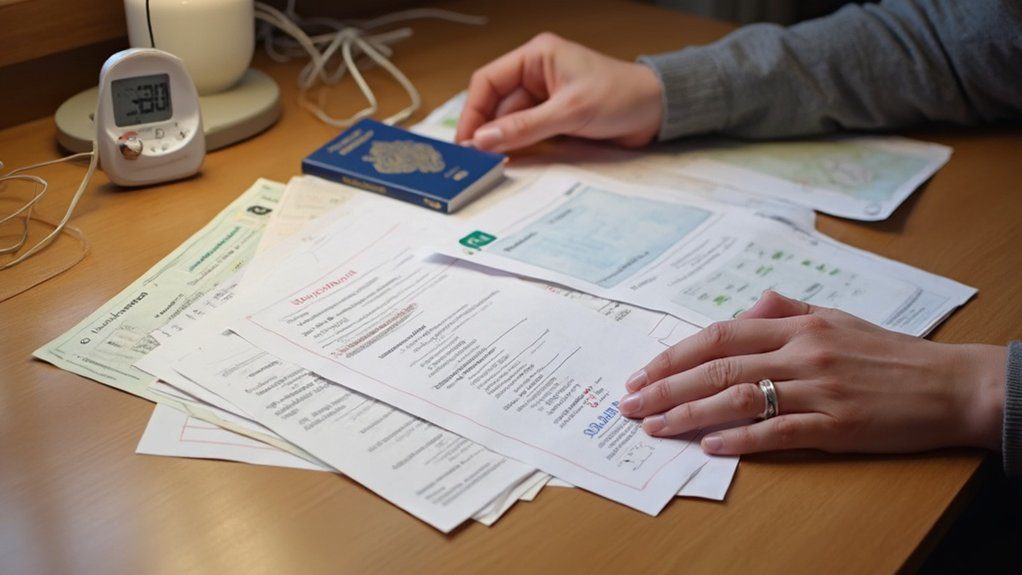
When gathering documents for your GBIS application, you’ll need several key pieces of information readily available.
Like many homeowners taking this important step toward energy efficiency, you’ll want to prepare your EPC rating certificate, which you can easily obtain from the GOV.UK EPC register.
Your required documents should include proof of your Council Tax band, which you can find using the GOV.UK Council Tax checker.
If you’re applying under the low-income group, gather your recent benefit statements showing eligibility.
Tenants should secure written permission from their landlord before proceeding.
Application tip: Create a digital folder containing scanned copies of all documents – this makes the online submission process smoother and guarantees you won’t need to search for information during the application process.
Step-by-Step Application Process
Since applying for the GBIS follows a structured process, understanding each step will help you navigate the system effectively.
Start by using the GOV.UK Eligibility Checker to confirm you meet the basic eligibility criteria for your property’s EPC rating and Council Tax band. Once verified, you’ll receive a referral to your energy supplier.
Your supplier will then arrange a free home assessment with a TrustMark-accredited installer who’ll determine the most suitable insulation measure for your property.
Following the assessment, you’ll receive a detailed cost breakdown showing your funding level. If you’re in the low-income group, you might qualify for 100% coverage, while general applicants typically contribute 10-30% of costs.
Remember these application tips: gather all required documents beforehand and keep copies of all correspondence with your supplier and installer.
Local Authority Flex Route Options
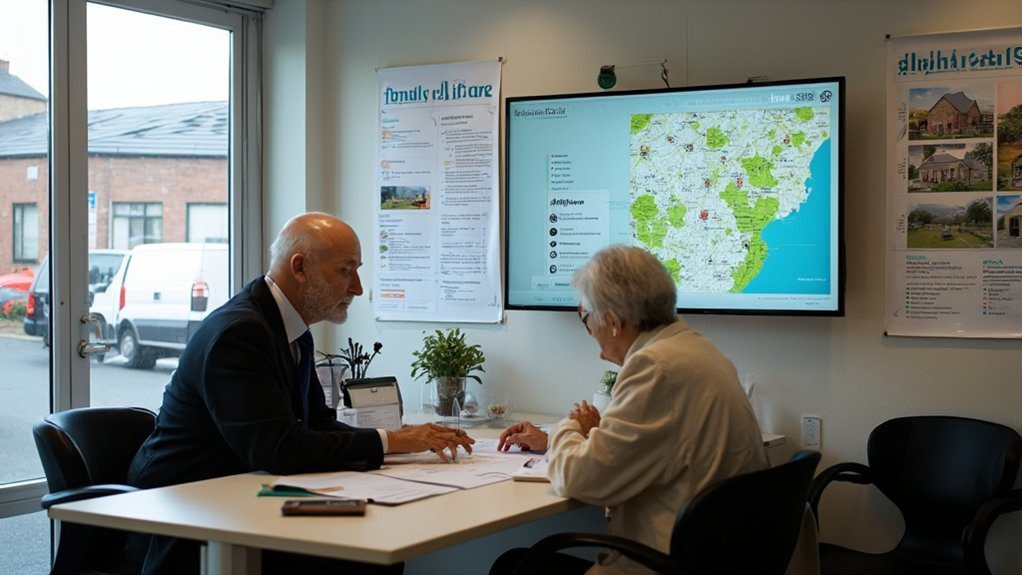
While standard GBIS eligibility focuses on EPC ratings and Council Tax bands, the Local Authority Flex route offers an alternative pathway for households that don’t meet typical criteria.
You can access GBIS support through your local council options if your household income falls below £31,000 annually or if someone in your home has health conditions aggravated by cold temperatures, such as respiratory issues.
This flexible approach guarantees that more vulnerable residents can benefit from home insulation improvements, even if they don’t qualify through traditional means.
To explore this route, you’ll need to contact your local council directly. They’ll assess your circumstances and can refer you to the scheme if you meet their criteria.
Your council may also have additional support programs that complement the GBIS benefits.
Funding and Cost Expectations
The Great British Insulation Scheme breaks down into two main funding categories: full coverage for low-income households and partial funding for general applicants. You’ll find various funding sources depending on your circumstances, with significant cost savings across different insulation types.
| Insulation Type | Low-Income Cost | General Group Cost |
|---|---|---|
| Cavity Wall | £0 | £200-£400 |
| Loft | £0 | £150-£350 |
| Solid Wall | £0 | £500-£1,500 |
| Under Floor | £0 | £300-£700 |
Understanding these cost comparisons helps you plan your home improvement budget effectively. If you’re in the low-income group, you won’t pay anything for the installations. For general applicants, you’ll typically contribute 10-30% of the total cost, while the scheme covers the remainder. These investments often pay for themselves through reduced energy bills within 2-3 years.
Installation Timeline and Process
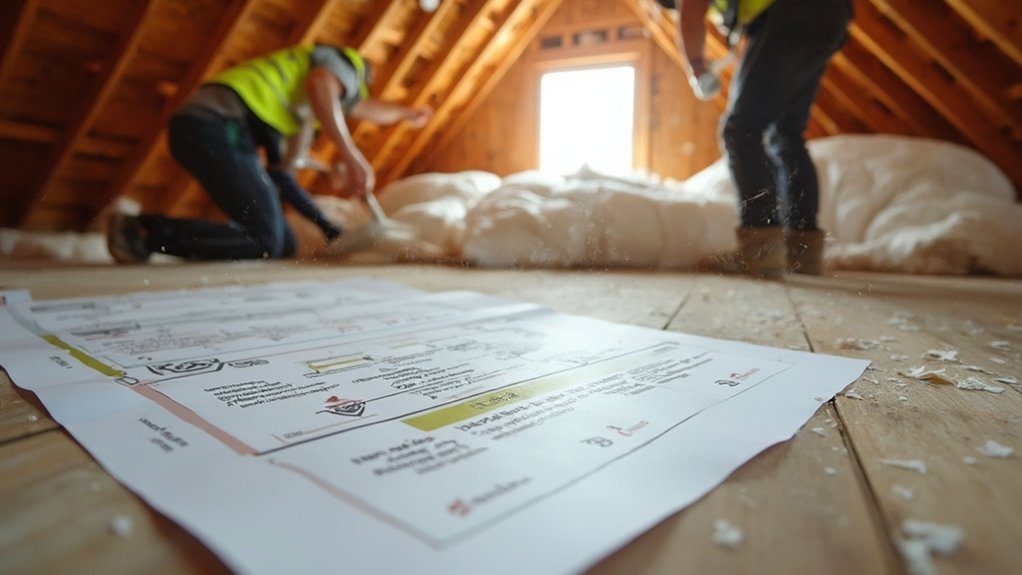
Once you’ve received approval for the Great British Insulation Scheme, a certified installer will contact you within 2-3 business days to schedule your installation.
Your assigned TrustMark-accredited contractor will work with you to find a convenient installation date, typically within 2-4 weeks of approval.
During installation scheduling, you’ll receive a detailed timeline outlining the process, including any preparation needed for your home.
Most installations take 1-2 days to complete, depending on the type of insulation you’re getting.
Your contractor selection is backed by strict quality standards, ensuring you’re in good hands throughout the process.
After completion, you’ll receive documentation confirming the work meets all regulations, along with warranty information and energy-saving tips to help you make the most of your newly insulated home.
Post-Installation Support and Follow-up
After your insulation installation is complete, you’ll receive extensive support to guarantee lasting benefits from your home improvement.
The GBIS ensures you’re not left on your own once the work is done, providing thorough follow-up services to maintain your home’s energy efficiency.
Your post-installation support includes:
- A detailed inspection report confirming the insulation’s proper installation and expected performance metrics
- Access to a dedicated helpline for reporting any concerns about your insulation maintenance during the first year
- An updated Energy Performance Certificate (EPC) reflecting your home’s improved energy efficiency rating
If you experience any issues, you can contact TrustMark or Ofgem directly.
Frequently Asked Questions
Can I Switch Energy Suppliers During the GBIS Installation Process?
You can switch energy suppliers during your application process, but it’s best to wait until after your installation is complete to avoid any complications or delays with your GBIS insulation project.
What Happens if I Move House After Applying for GBIS?
Like a house of cards, your GBIS journey needs adjusting when you move. You’ll need to cancel your current application status and restart the process at your new property to maintain eligibility.
Are There Restrictions on When Insulation Work Can Be Done Seasonally?
You’ll find there aren’t strict seasonal limitations on your insulation work. While installers can work year-round, they’ll typically schedule your installation during favorable weather conditions, usually within 2-4 weeks of approval.
Can Multiple Properties Owned by the Same Landlord Apply Simultaneously?
Yes, you and your properties can apply together! Each rental property must meet individual eligibility requirements, and you’ll need to handle separate applications while maintaining your landlord responsibilities for each qualifying home.
Will the Installation Process Affect My Home Insurance Coverage?
You’ll need to inform your insurer about the insulation work, as it may affect your coverage. Most providers welcome these improvements, but it’s best to check for any insurance implications or coverage adjustments beforehand.
Conclusion
Ready to make your home warmer and more energy-efficient? The Great British Insulation Scheme offers you a straightforward path to better home insulation. By following the eligibility checks, gathering your documentation, and connecting with approved installers, you’ll be well on your way to reducing your energy bills. Don’t wait – check your property’s EPC rating today and start your GBIS application for a cozier, more sustainable home.

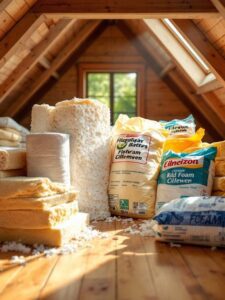






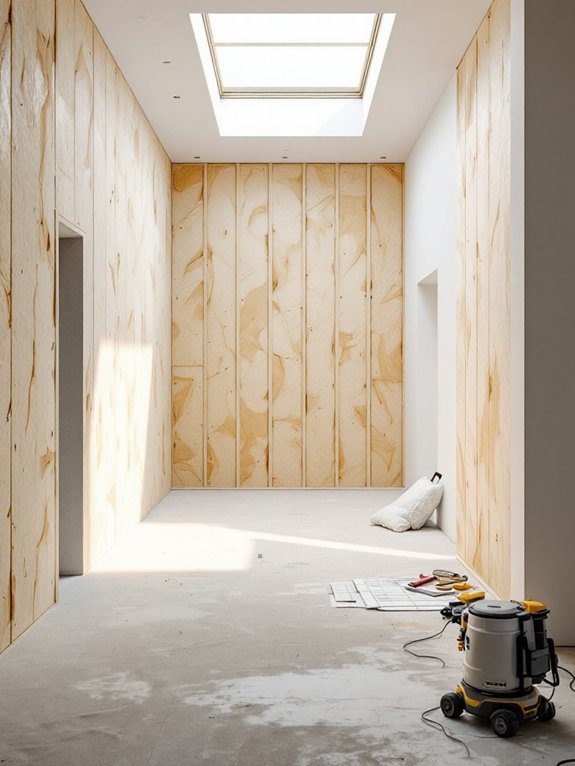
2 Responses
Can you be more specific about the content of your article? After reading it, I still have some doubts. Hope you can help me.
Can you be more specific about the content of your article? After reading it, I still have some doubts. Hope you can help me.